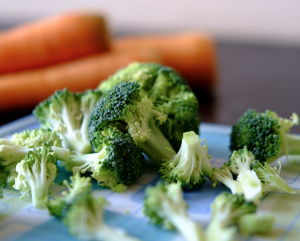Finding the best foods for your little ones can be extra work that you don’t need. Here are some simple ideas for what to feed your baby that can help you along the way…
All babies are different – some may be ready for solid foods earlier than others, and some will take to weaning more quickly. Department of Health recommendations are to start weaning around the age of 6 months, but never before 17 weeks. Look for signs that your baby is ready to wean. They should be able to sit up and hold their head steady, and put an object, like a spoon, into their mouth accurately. Even then, if they push food back out with their tongue, wait a week and try again. Check with your health visitor if you are offering your baby food before they turn 6 months of age (but after 17 weeks).
Read the first part of this guide on what to feed your baby here.

From mush to mash… and beyond
All babies are different. They may reach the following stages a bit earlier or later than we’ve suggested here, but that’s totally normal. Remember that lots of the recipes in this book can be mashed up or blended for babies at 7 months onwards, too.
4-5 Months
Little by little Chat to your health visitor if you think your little one might be ready to wean before the age of 6 months (but after 17 weeks)
How do I eat? I can swallow smooth, puréed food with the texture of pouring cream.
What can I eat? Tiny tastes of a variety of smoothly puréed vegetables, followed by fruit and gluten-free cereals. Just a few spoonfuls a day.
6-7 Months
How do I eat? Using my tongue, I can move thicker purées from side to side in my mouth.
What can I eat? A variety of vegetables and fruits. I can now eat thicker purées and can try soft finger foods, such as cooked vegetable sticks about the size of an adult’s index finger. Introduce allergen foods one by one, such as cereals containing gluten, yoghurt, soya, fish and eggs. Introduce protein foods, such as pulses and meat.
7-9 Months
How do I eat? I can mush up soft lumps with my tongue and I am getting better at grasping finger foods and putting them in my mouth. Let me hold a spoon and I’ll try scooping.
What can I eat? Fork-mashed fruit and veg, softly cooked minced beef and turkey, and mashed-down lentils and beans. I can eat a wider range of finger foods, such as bread or toast soldiers, scrambled egg and large pasta pieces.
10-12 Months
How do I eat? I may now have a tooth or two, so I love to munch on larger chunks. I can eat finger foods with a bit of bite and I can pick up smaller pieces of food with my pincer grip.
What can I eat? Whole peas, beans and sweetcorn, firmer cooked veg and larger pieces of softly cooked meat, as well as raw vegetable sticks, such as cucumber or avocado.

Tiny Tums and energy needs
Babies need lots of calories and nutrients to fuel their super-fast growth. In fact, per kilo of their body weight, they need more calories than you do.
However, your baby’s tummy is still tiny and it can’t hold a lot of food in one go. From around 10 months, it’s important to give your little one three meals and two nutritious snacks each day, as well as at least 500ml (17fl oz) of his or her usual milk.
Handy healthy snacks
Try your baby on the following healthy snacks from around 7-9 months old, depending upon when your baby is ready.
- Pitta slices with hummus or cream cheese
- Breadsticks and dips
- Cubes of cheese
- Cooked broccoli ‘trees’ and carrot sticks
- Cooked pasta shapes – try the spinach and tomato varieties to provide some interesting colours
Once your baby turns 10-12 months old, blueberries, raspberries and strawberries make good snacks, too.

